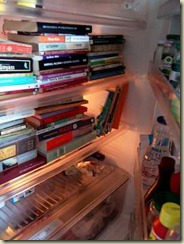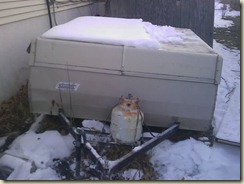Keeping Resin or outdoor furniture looking new longer…
The cleaning of outdoor furniture is always an issue, being outdoors they get more exposure to dirty and effects of the sun, rain and cold. The clean up of outdoor furniture is common question we receive. Here is a idea to make the clean up easier and have your furniture looking newer longer. Apply a good quality car wax and wax them like you would wax your car (paste wax is better).
Dusty garage? or drywall dust in your home….
If you have a super dusty or dirty garage floor or you have done some drywall repairs in your house the drywall dust can get everywhere. The one product you need to help knock down the dust is sweeping compound. You spread on the floor and then sweep the sweeping compound attracts the fine dust or drywall powder and prevents it from going airborne. The truth is unless you have a high filtration vacuum it is likely better to use sweeping compound. Sweeping compound can be purchased at hardware stores or any janitorial supply store. The more common type is oil based sweeping compound but you can also buy wax based sweeping compound, its the perfect solution for super dusty floors.
Crystal Decanters
Decanters for wine and spirits are decorative vessels for storing and serving a wide variety of beverages.
Wine can be permitted time to breath before serving, and a leaded crystal decanter is far more stately than a Jim Beam or Jack Daniels bottle. Often the decorative crystal or glass tops do not seal completely, and when used for alcoholic beverages, the alcohol can evaporate and leave stains, or even a hazy or cloudy appearance.
The first step is to place a thick towel in the bottom of the sink, as a sharp blow on a corner or edge might crack or chip the decanter. Using warm water and soap fill the decanter and allow it to sit for a few hours or overnight to loosen any residue. A bottle brush will allow you to gently scrub the bottom to loosen up tough stains. Rinse the decanter thoroughly, as any remaining soap can taint the taste of future contents. The decanter may look clean, and clear when wet, however the hazing or water stains, similar to a hard water deposits, may only be evident after the inside is dry. Allowing a mild acid, such as white vinegar to sit in the decanter, again over night, usually will remove this film. Some people use rice, rock salt, or baking powder to act as a bit of an abrasive that will aid in the removal of these stains as it is shaken or swirled around in the vinegar solution. If the vinegar is not acidic enough to remove the film, a mild commercial acid such as CLR can be employed. Limit the time that the CLR remains in the decanter, and give it a quick wash with regular dish detergent and water, ensuring a thorough rinse before drying the inside.
Some decanters have very narrow necks. Roll up a good quality paper towel and slide it inside the decanter. (A cheap paper towel might fall apart or leave lint inside) Spin it around to unroll it inside, being careful not to allow the paper towel to fall inside completely! Remove the paper towel and let the decanter sit out overnight to dry completely, then fill it up with your favorite beverage to be displayed and served in style!
Stain busting…basic rules for success
Never scrub or rub a stain! The initial urge is to bring out the elbow grease and muscle your stains away. However it is always best to absorb, blot or rinse your stain away. Rubbing or scrubbing only drives the stain deeper and can even wear down your fabric or carpet weaking the fibers pre-maturely. Start with blotting (look up botting techniques on our site), flush fabric with cold water (heat will set many or most stains). Soaking fabrics and then rinsing before washing. Even try freezing stains and peeling them off. Remember absorb not scrub and your success will increase in your stain busting efforts.
Cleaning out a garburator
Garburators are under appreciated and generally unnoticed appliances that is until they stop working, start to smell funny or sound like a blender filled with marbles and nails.
Garburators are essentially a hefty motor attached to an impeller that pulverizes food until it is small enough to pass into the drain pipe as you run water into the unit.
These units are very reliable, but many older units tend to have problems, especially when they are not used for extended periods. Garburators mix water and electricity which is typically not an ideal combination.
The most common problem is that the unit just stops working when you press the switch, and this is often realized after you have dumped the most disgusting mix of old food scraps into the unit, and they start to smell because the pieces are too large to wash into the waste drain pipe.
First things first press the wall or sink top button and listen carefully. If it is working you will definitely hear it turn on, or you may hear a very soft humming or buzzing noise from beneath the sink, or you will hear absolute silence.
If you hear nothing at all, grab a flashlight and look at the bottom or side of the giant motor hanging beneath your sink. There will be a small (usually red) button, which is an internal safety reset. Press this button in (you may need the end of a pencil or your pinky if it is inset into a small indent). If this button has popped out, there is a problem with your garborator, but if the button is depressed already, try to identify the breaker on the main electrical panel, and see if it is switched on. If the breaker is tripped, reset it by turning it off, then turning it back on. Test the garborator again. If it works, fantastic, otherwise you may hear the humming noise, (perhaps just briefly) before the breaker or safety reset trips off again.
If you hear the humming, even if just briefly before the breaker shuts off, likely the unit is seized. This sounds like bad news, but frequently it is simply because the unit hasn’t been used for months, or years.
Turn off the breaker, ensure that the switch is in the off position, and proceed to remove the rubber gasket in the mouth of the unit. With a flashlight, you should be able to see clearly into the unit (after you have scooped out all the disgusting food scraps mentioned at the beginning). With most the food removed, you can usually wash away the small scraps, unless the drain is plugged, in which case you need to remove the waste water in the unit as well. There are special suction tools for this, but in a pinch a turkey baster, or a car wash sponge will allow you to soak up enough water to see the impeller.
The impeller should turn freely. If it doesn’t turn (try the end of a wooden spoon) easily, this is what is causing the reset switch or breaker to trip. Food, dishwashing goo, rust and other assorted stuff can seize up the impeller, which causes the reset switch or breaker to trip, resulting in the clogged and/or smelly garborator.
Sometimes a wooden spoon with a long handle is enough to spin the impeller loose but often a small crowbar or large screwdriver is required. Be certain the unit is turned off at the breaker when trying to free the impeller! If you aren’t comfortable or absolutely certain you have disabled power to the unit, call a plumber!
Once the impeller spins freely, replace the rubber gasket or garborator sink stopper, turn on the breaker, double check the safety reset switch and turn the unit on. If you had the impeller spinning before, the unit should roar to life.
If it is smelling sour, cut up a lemon and dump it into the unit to help clean off whatever it is that is causing the odor. In fact, once a month or so, it doesn’t hurt to cycle the unit, to be sure it doesn’t seize up again.
If this does work, you have just spent 20 minutes saving several hundred dollars, if this doesn’t correct the problems you are experiencing, likely you require a new unit. Good luck!
How to Clean Mold From Tent-Trailers
The first thing you need to do is Air the trailer out. the main reason for mold is a damp area and no air to dry things out. Just like when they are collapsed and sitting. Once the trailer is fully dried out There are a few product that help such as Totally Awesome from Dollar General this product has been reported to work very well on moldy canvas.
If you are not around one of these store then some good old home made recipes such as this one. Use the bucket to mix a solution of one part bleach to eight parts warm water. Good old Bleach comes to the rescue once again. Just use a spray bottle to lightly spray the bleach mixture on the affected area. Always taking care to not overspray areas you don’t want bleached. Make sure you air is out for a couple of days after applying this method..
Stinky Fridge/Freezer

PLEASE HELP
Eeeewwwwww….Yech!
You are obviously a very compassionate woman for sparing his life.
Your initial instinct was correct. For a fridge that has maybe a day or two of odors, this will work, however since the plastic has been absorbing this fragrant odor for several months, you have to be more aggressive.
The clean up you did is the first step, although it would have seemed more appropriate if your husband were forced to do it sans the respirator and gloves.
Try a shallow pan of active charcoal, which you can find at your local pet store or aquarium supplier. Let this sit for a few days and see if it helps enough to make it tolerable. Another great hint is to fill a shallow pan with fresh ground up coffee. This smell is more powerful, and it too will be absorbed by the plastic. This is more masking the problem than removing the odors, but it is likely better to smell coffee, than, well whatever it smelled like. (And I thank you for not describing that part to me)
If this still does not work to your satisfaction, we have one final idea. Empty the fridge and be sure it is ON, crumple up some old newspaper, and mist the paper with water. Stuff the fridge full of these big balls until it is entirely filled. Replace the old newspaper, with new, fresh moistened newspaper balls every other day. Try using the sports section before your husband reads it, to remind him that it was his mistake. Repeat this four or five times (yes this will take a week to 10 days!), at which time it should be OK to breath when you open the door. It is possible the fridge will require defrosting once you have done this, if all the moisture has migrated up the freezer.
Even when you are done this, the baking soda, and/or ground coffee won’t hurt, although the coffee may flavor unsealed food as well.
Failing all of the above, put your husband in the fridge, dump them in a landfill, and go get yourself a new model of each.
Cleaning oil from a boat
How to clean anything is a collection of cleaning tips compiled by professionals who have worked for years in the custodial industry. We have answered questions about almost everything but recently we started to get questions about cleaning oil from boat hulls. These questions, obviously, as a result of the massive oil spill in the Gulf of Mexico.
Doing a bit of research we discovered a news article about the decontamination tugboat Resolute, which helps cleans vessels everyday using a 2,000 psi water cannon. This process usually removes just the thickest deposits so the boats won’t deposit any oil as they return to port. Evidently the remaining deposits still stuck to the hull need to be cleaned later with higher-pressure hoses and dry ice equipment. All this just to clean the boats that are cleaning up the oil spill!
We have learned that lighter deposits or the brownish ring around the boat at the waterline can usually be removed using regular dish detergent.Use gloves, wear protective eye wear, and apply a liberal solution using a sponge or spray bottle, then wipe the area with a paper towels and collect them into a separate plastic bag which can be taken to a clean up collection centre. We would caution that crude oil can contain very dangerous compounds, and even adding dish detergents into coastal waters might be viewed as introducing pollution!
Ask your marina, or local authorities for the contact information for the clean up efforts in your area for specific details, assistance and where to deposit the collected oil.
Oil from BP Corporate logo
The How to clean anything logo.
We are committed to help cleaning up the world.
The BP corporate logo. Co-incidence?
Now they are also committed to cleaning up (part) of the world.
Despair.coms take on the BP Logo.
Sorry BP, we can clean almost anything, but we just cant
get that oil stain off your corporate logo




